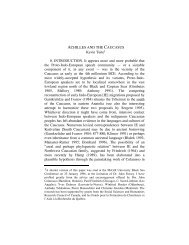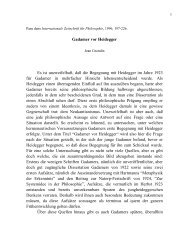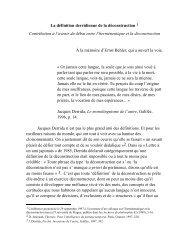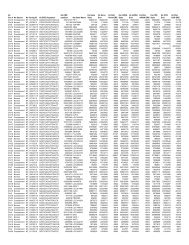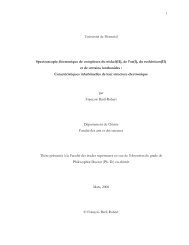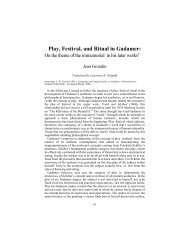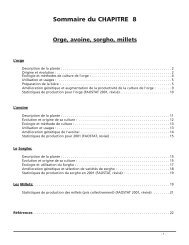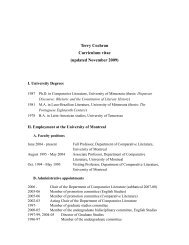1. La criminologie développementale
1. La criminologie développementale
1. La criminologie développementale
Create successful ePaper yourself
Turn your PDF publications into a flip-book with our unique Google optimized e-Paper software.
Loeber, R., <strong>La</strong>course, É. & Homish, D. L. (2005). Homicide, violence and developmental<br />
trajectories. In R.E. Tremblay, W. W. Hartup, & J. Archer (Eds.), Developmental origins of<br />
aggression (pp. 202-219). New York, NY : Guilford Press<br />
Loeber, R., & Stouthamer-Loeber, M. (1998). Development of juvenile aggression and<br />
violence: Some common misconceptions and controversies. American Psychologist, 53, 242-<br />
259.<br />
Loeber, R., & Pardini, D.A. (2008). Neurobiology and the development of violence: common<br />
assumptions and controversies. Philosophical Transactions of the Royal Society B: Biological<br />
Sciences. 363, 2491-2503.<br />
Lorenz, C. (1963). On aggression. Harcourt, Brace and World: New York. 306p.<br />
Matsueda, Ross L., and Karen Heimer. 1997. "A Symbolic Interactionist Theory of Role<br />
Transitions, Role Commitments, and Delinquency." Pp. 163-213 in Advances in<br />
Criminological Theory, Vol. 7, Developmental Theories of Crime and Delinquency, edited by<br />
Terence P. Thornberry. New Brunswick, NJ: Transaction<br />
Moffitt, T. E. (1993). Adolescence-limited and life-course persistent antisocial behavior : A<br />
developmental taxonomy. Psychological Review, 100, 674-70<strong>1.</strong><br />
Nagin, D., & Tremblay, R. E. (1999). Trajectories of boys’ physical aggression, opposition,<br />
and hyperactivity on the path to physically violent and nonviolent juvenile delinquency.<br />
Child Development, 70 (5), 1181-1196<br />
Nagin, D., & Tremblay, R. E. (2005). What has been learned from group-based trajectory<br />
modeling? Examples from physical aggression and other problem behaviors. The Annals of<br />
the American Academy of Political and Social Science, 602 (1), 82-117.<br />
Patterson, G. R., DeBaryshe & Ramsey (1989). A developmental perspective on antisocial<br />
behaviour.<br />
Quetelet (1835). Sur l’homme et le développement de ses facultés ou Essai de physique<br />
sociale. Bruxelles : C. Muquardt. 346p.<br />
Sampson & <strong>La</strong>ub (1993). Crime in the making: Pathways and turning points through life.<br />
Salvas, M.-C., Vitaro, F., Brendgen, M., <strong>La</strong>course, É., Boivin, M. & Tremblay, R. E. (Sous<br />
presse). Interplay between friend's aggression and friendship quality in the development of<br />
child aggression during the early school years. Social Development.<br />
Tedeschi, J., & Felson, R.B. (1994). Violence, aggression, and coercive actions. American<br />
Psychological Association. 463p.<br />
Thornberry, Terence P. (2005). Explaining multiple patterns of offending across the life<br />
course and across generations. The Annals of the American Academy of Political and Social<br />
Science, 602 (1), 156-195.<br />
Tremblay, Richard E., Daniel S. Nagin, Jean R. Seguin, Mark Zoccolillo, Philip D. Zelazo,<br />
Michel Boivin, Daniel Perusse, & Christa Japel. (2004). Physical aggression during early<br />
childhood: Trajectories and predictors. Pediatrics, 114, 43-50.<br />
Tremblay, R. E. (2008a) Prévenir la violence dès la petite enfance. Paris. Odile Jacob. 272p.<br />
14



